

Articles
How To Store A Car For A Year
Modified: October 20, 2024
Discover the best articles on how to store a car for a year, including tips and tricks to keep your vehicle in optimal condition during long-term storage.
(Many of the links in this article redirect to a specific reviewed product. Your purchase of these products through affiliate links helps to generate commission for Storables.com, at no extra cost. Learn more)
Introduction
Storing a car for an extended period of time, such as a year, can be a daunting task. Whether you’re going on a long trip, have a secondary car that is not in use, or simply need to store your vehicle temporarily, proper car storage is essential to maintain its condition and ensure it’s ready for use when you need it again.
In this article, we will guide you through the step-by-step process of storing a car for a year, providing valuable tips and techniques to keep your vehicle safe and in optimal condition during its time in storage.
From choosing a suitable storage location to performing necessary maintenance and protecting the car’s exterior and interior, we will cover all the essential steps to ensure that your car stays in top shape while it is not in use.
Whether you own a classic car, a vintage vehicle, or a modern car, the same principles apply when it comes to storing a car for an extended period. By following our expert tips, you can rest assured that your car will be protected from damage, deterioration, and other potential issues that can arise during storage.
So, let’s dive in and learn how to properly store a car for a year!
Key Takeaways:
- Proper car storage for a year involves choosing a suitable location, thorough cleaning, maintenance, and protection of the exterior and interior. This ensures the car remains in top condition for future use.
- Regular monitoring, tire care, fluid maintenance, and security measures are essential for preserving the car’s value and ensuring a smooth transition back on the road after a year of storage.
Read more: How To Store A Car For 5 Years
Step 1: Choose a Suitable Storage Location
When it comes to storing your car for a year, one of the most important considerations is the selection of a suitable storage location. Whether you choose an indoor or outdoor storage facility, there are a few key factors to keep in mind:
1. Climate-controlled environment: Ideally, you want to store your car in a climate-controlled facility. Extreme temperatures, fluctuations in humidity, and exposure to the elements can all cause damage to your vehicle over time. A climate-controlled environment helps to maintain stable temperature and humidity levels, ensuring your car stays in optimal condition.
2. Security measures: Look for a storage facility that has adequate security measures in place. This can include surveillance cameras, secure fencing, and trained personnel on-site. The last thing you want is to store your car in a facility with lax security, increasing the risk of theft or vandalism.
3. Clean and dry space: Ensure that the storage area is clean and dry. Moisture can cause rust and mold, so it’s essential to choose a storage location that is free from leaks, dampness, and excess humidity.
4. Accessibility: Consider the accessibility of the storage facility. If you anticipate needing to access your car during its time in storage, opt for a facility that allows easy access and flexible visiting hours.
5. Insurance coverage: Check if the storage facility offers insurance coverage for stored vehicles. While you may have insurance for your car, it’s important to verify if it extends to cover storage as well. If not, consider purchasing additional insurance specifically tailored for stored vehicles.
By taking the time to research and choose a suitable storage location, you can ensure that your car is kept in a secure and controlled environment, minimizing the risk of damage or deterioration.
Step 2: Clean and Prepare the Car
Before placing your car in storage for a year, it’s crucial to thoroughly clean and prepare it to minimize the risk of damage or deterioration. Here are the essential steps to follow:
1. Exterior cleaning: Start by washing the exterior of the car thoroughly. Use a gentle car wash soap and a soft sponge or microfiber cloth to avoid scratching the paint. Pay attention to the nooks, crevices, and undercarriage to remove any dirt, debris, or road salt that may have accumulated.
2. Waxing and polishing: Once the car is clean and dry, apply a layer of wax to protect the paint from oxidation and UV damage during storage. Waxing will also make it easier to clean the car when you take it out of storage after a year. Consider using a synthetic polymer wax for extended protection.
3. Interior cleaning: Clean the interior thoroughly, removing any trash, food crumbs, or debris. Vacuum the carpets, seats, and floor mats, and wipe down all surfaces with a mild interior cleaner. Don’t forget to clean the windows and mirrors as well.
4. Moisture protection: To prevent moisture buildup during storage, it’s essential to eliminate any potential sources of dampness. Ensure that the interior is completely dry before storing the car. Consider using moisture absorbers or desiccant packs inside the car to absorb any excess moisture and prevent musty odors or mold growth.
5. Remove perishable items: Take out any perishable items from the car, such as food, plants, or liquids. These items can attract pests or cause unpleasant odors during storage.
6. Pest control: Take steps to minimize the risk of pests making their home in your car during storage. Consider placing mothballs or cotton balls soaked in peppermint oil in strategic locations within the car, as these scents deter many pests. Ensure that all openings, such as vents or exhaust pipes, are covered to prevent access for small animals.
By thoroughly cleaning the car and preparing it for storage, you not only minimize the risk of damage but also make it more enjoyable to use once it’s time to take it out of storage. This step is crucial to maintain the overall condition and appearance of your vehicle while it is not in use.
Step 3: Perform Necessary Maintenance
Performing necessary maintenance on your car before storing it for a year is essential to ensure that it remains in good running condition during its time in storage. Here are some crucial maintenance tasks to consider:
1. Change the oil and filter: Prior to storing your car, it’s recommended to change the oil and filter. Old oil can become contaminated and may cause damage to the engine if left sitting for an extended period.
2. Check and top up fluids: Check all fluid levels, including coolant, brake fluid, power steering fluid, and windshield washer fluid. If any of the fluids are low, top them up to the recommended levels. This helps to prevent any potential issues caused by fluid degradation or leaks during storage.
3. Fuel stabilization: Add a fuel stabilizer to the gas tank to prevent the fuel from deteriorating and causing fuel system problems. Follow the manufacturer’s instructions for the appropriate amount of stabilizer based on the fuel tank capacity. Run the engine for a few minutes to ensure that the stabilizer is mixed throughout the fuel system.
4. Battery maintenance: If your car will be in storage for a year, it’s advisable to either remove the battery or disconnect it to prevent it from draining. If you choose to leave the battery connected, consider using a battery tender or maintainer to keep it charged during storage.
5. Tires and suspension: Inflate the tires to the recommended pressure and inspect them for any signs of damage or uneven wear. If possible, place the car on jack stands to relieve the weight on the suspension components and prevent flat spots on the tires.
6. Belts and hoses: Inspect the belts and hoses for any signs of cracking, wear, or leaks. Replace any damaged or deteriorated belts and hoses before storing the car.
7. Brakes: Check the brake pads and rotors for wear. If necessary, replace them to prevent corrosion and potential issues with the braking system during storage.
By performing necessary maintenance tasks before storing your car, you can prevent potential damage or issues that may arise during its time in storage. This proactive approach helps to keep your vehicle in good condition and ensures it will be ready for use when you retrieve it after a year.
Step 4: Protect the Car’s Exterior
Protecting the exterior of your car is crucial during its storage period to prevent any damage or deterioration. Here are some important steps to follow:
1. Cover the car: Use a breathable car cover specifically designed for long-term storage to protect your vehicle from dust, dirt, and potential scratches. Ensure that the cover fits snugly and securely to prevent any moisture from getting trapped inside.
2. Park in a shaded area: If storing your car outdoors, try to find a shaded area to minimize exposure to sunlight. Prolonged exposure to UV rays can fade the paint and cause damage to the exterior over time.
3. Avoid parking under trees: While shade is beneficial, parking your car under trees can pose a risk. Falling leaves, sap, bird droppings, and other debris can damage the paint and require additional cleaning and maintenance.
4. Apply a protective coating: Consider applying a protective coating, such as paint sealant or ceramic coating, to add an extra layer of protection to your car’s paint. These coatings provide enhanced resistance against UV rays, dirt, and other environmental contaminants.
5. Regularly clean the car: Even while in storage, it’s important to periodically clean the car to remove any accumulated dust and dirt. Use a gentle car wash soap and a soft sponge or microfiber cloth. Avoid abrasive cleaners or brushes that may scratch the paint.
6. Wax touch-ups: Every few months, give your car a quick wax touch-up to maintain its protective layer. This helps to prevent paint oxidation and maintain the shine of the exterior.
7. Regularly inspect for damage: During storage, periodically inspect your car for any signs of damage, such as dents, scratches, or rust. Addressing these issues promptly can prevent them from worsening and causing further damage.
By taking the necessary measures to protect the exterior of your car, you can preserve its appearance and prevent potential damage caused by environmental factors during its time in storage. A well-protected exterior ensures that your car will be in excellent condition and ready to hit the road after a year of storage.
Read more: How To Store A Car For 20 Years
Step 5: Protect the Car’s Interior
Protecting the interior of your car is just as important as safeguarding the exterior during its storage period. Here are some essential steps to ensure the interior stays in optimal condition:
1. Clean and vacuum: Thoroughly clean and vacuum the interior of your car before storing it. Remove any debris, dirt, or food crumbs that may attract pests or cause odors. Pay special attention to the carpets, upholstery, and hard-to-reach areas.
2. Use interior protectants: Apply an interior protectant, such as a leather conditioner or fabric guard, to surfaces like leather seats, dashboard, and door panels. This helps to moisturize and protect the materials, preventing drying and cracking during the storage period.
3. Protect the floor and seats: Place floor mats or protective covers on the floor and seats to prevent stains, wear, and tear. This is especially important if you anticipate any moisture or potential spills during the storage period.
4. Leave windows slightly cracked: If possible, leave the windows slightly cracked to allow air circulation and prevent stale odors from building up. This is particularly important in humid environments to help reduce moisture buildup.
5. Use sunshades: Install sunshades on the windshield and rear window to protect the interior from excessive heat and sun damage. Sunshades can help prevent fading and deterioration of the upholstery, dashboard, and other interior components.
6. Use interior deodorizers: Place an interior deodorizer, such as an air freshener or odor absorber, inside the car to keep it smelling fresh during storage. Be cautious with strong scents, as they may permeate the materials and be difficult to remove later on.
7. Store valuable items separately: Remove any valuable items, such as electronics, documents, or personal belongings, from the car and store them separately. This reduces the risk of theft or damage, and also minimizes the clutter inside the car.
By following these steps, you can protect the interior of your car from dirt, moisture, and damage during the storage period. Taking the time to care for the interior ensures that your car remains clean, fresh, and comfortable when you retrieve it after a year.
Before storing a car for a year, fill the gas tank and add a fuel stabilizer to prevent the fuel from breaking down. This will help keep the engine running smoothly when you start it up again.
Step 6: Prevent Tire Damage
Tire damage is a common concern when storing a car for an extended period. To ensure that your tires remain in good condition during the storage period and are ready for use when you retrieve your car, it’s important to take the following steps:
1. Inflate tires to the recommended pressure: Before storing your car, inflate the tires to the manufacturer’s recommended pressure. This helps to prevent flat spots from forming on the tires due to prolonged weight-bearing.
2. Move the car periodically: If possible, move the car every few months to prevent the tires from developing flat spots. Flat spots can occur when a car remains stationary in the same position for an extended period, causing the tires to develop flat areas that can be permanent.
3. Use tire cradles or jack stands: Consider using tire cradles or placing the car on jack stands to relieve the weight on the tires and prevent flat spots. By lifting the car off the ground, you minimize the strain on the tires and ensure they maintain their shape during storage.
4. Avoid parking on uneven surfaces: If storing your car outdoors, try to find a level parking area. Parking on uneven surfaces can put uneven pressure on the tires, leading to potential damage or flat spots.
5. Protect tires from sunlight and ozone exposure: If storing your car outdoors, use tire covers to protect the tires from excessive exposure to sunlight and ozone in the air. Sunlight and ozone can cause the rubber to deteriorate and crack over time.
6. Check tires for cracks or bulges: Regularly inspect the tires for any signs of cracks, bulges, or damage. This is especially important before taking the car out of storage after a year. If you notice any abnormalities, have the tires inspected by a professional before driving the car.
7. Monitor tire pressure: Periodically check the tire pressure during the storage period to ensure it remains at the recommended levels. Extreme temperature fluctuations can cause changes in tire pressure, so it’s important to maintain proper inflation.
By taking these preventive measures, you can minimize the risk of tire damage and ensure that your tires are in good condition when it’s time to retrieve your car from storage after a year.
Step 7: Maintain Proper Fluid Levels
Maintaining proper fluid levels in your car is crucial when storing it for a year to prevent potential issues and ensure that the vehicle remains in good working condition. Here are some important fluid maintenance steps to follow:
1. Check engine oil: Before storing your car, check the engine oil level and top it up if necessary. Clean oil helps to lubricate the internal components and prevent corrosion. Consider changing the oil if it’s due for a scheduled oil change during the storage period.
2. Check coolant level: Ensure that the coolant level is at the proper level in the coolant reservoir or radiator. Coolant helps to regulate the engine temperature and prevent overheating. Top up the coolant if needed to maintain the recommended level.
3. Verify brake fluid level: Check the brake fluid level in the brake fluid reservoir. If it’s below the recommended level, top it up to ensure optimal braking performance. If the brake fluid appears old or contaminated, consider having it flushed and replaced before storing the car.
4. Inspect power steering fluid: Check the power steering fluid level and ensure it’s within the designated range on the dipstick or reservoir. If it’s low, add the recommended fluid to maintain proper power steering function.
5. Verify windshield washer fluid: Check the windshield washer fluid level and refill it if necessary. This ensures that you have enough washer fluid if needed after retrieving your car from storage.
6. Fuel stabilizer: As mentioned in previous steps, add a fuel stabilizer to the gas tank before storing your car. This helps to prevent fuel degradation and keeps the fuel system clean during storage.
7. Automatic transmission fluid (ATF): If your car has an automatic transmission, check the ATF level. Ensure that it’s at the proper level according to the manufacturer’s guidelines. If the transmission fluid is due for a change during the storage period, it’s recommended to have it serviced before storing the car.
It’s important to remember that fluid levels can change over time, even if the car is not in use. Regularly check the fluid levels throughout the storage period and top them up as needed to maintain proper functioning and prevent any potential damage or issues related to low fluid levels.
Step 8: Disconnect the Battery
When storing your car for a year, it’s recommended to disconnect the battery to prevent it from draining and potentially causing damage. Here are the necessary steps to disconnect your car’s battery:
1. Locate the battery: Identify the location of the battery in your car. It’s usually found under the hood, but in some models, it may be located in the trunk or under a seat.
2. Turn off all electrical systems: Before disconnecting the battery, ensure that all electrical systems in the car are turned off. This includes lights, radio, air conditioning, and other accessories. Double-check that nothing is left switched on.
3. Disconnect the negative terminal: Using a wrench or pliers, loosen and remove the plastic cap or cover from the negative terminal of the battery. The negative terminal is usually marked with a “-” symbol. Loosen the nut or bolt that connects the cable to the terminal and carefully disconnect the cable. It’s important to disconnect the negative terminal first to avoid any accidental electrical short circuits.
4. Disconnect the positive terminal: With the negative terminal already disconnected, move on to the positive terminal of the battery. It is usually marked with a “+” symbol. Follow the same process by loosening the nut or bolt, and carefully disconnect the cable from the positive terminal.
5. Insulate the battery terminals: After removing the cables, it’s a good idea to insulate them to prevent accidental contact with metal or each other. You can wrap each terminal in electrical tape or use battery terminal covers for extra protection.
6. Store the battery separately (optional): If you prefer, you can remove the battery from the car and store it separately in a cool and dry location. This further ensures that the battery remains in good condition during the storage period.
7. Maintain the battery (optional): If you choose to keep the battery connected during storage, consider using a battery tender or maintainer. These devices can be connected to the battery to provide a slow and steady charge, keeping it properly charged without overcharging.
By disconnecting the battery during vehicle storage, you prevent battery drain and potential electrical problems. It’s an important step to maintain the overall health of your car’s electrical system and ensure a smooth start when you’re ready to retrieve and use your car after a year of storage.
Read more: How To Store Food For Years
Step 9: Secure the Car
Ensuring the security of your car while it is in storage is a crucial step. By taking the necessary precautions to secure your vehicle, you can minimize the risk of theft, vandalism, or unauthorized access. Here are some important measures to consider:
1. Lock all doors and windows: Before storing your car, double-check to ensure that all doors, windows, and sunroofs are securely closed and locked. This may seem obvious, but it’s a simple yet essential step to prevent unauthorized entry.
2. Activate the car alarm (if equipped): If your car is equipped with an alarm system, activate it before leaving the vehicle in storage. This can serve as a deterrent and alert you or others nearby in the event of an attempted break-in.
3. Use a steering wheel lock: Consider using a steering wheel lock or a wheel immobilizer to further enhance the security of your car. These devices make it more difficult for potential thieves to steer or move the vehicle.
4. Park in a well-lit area (if storing outdoors): If you are storing your car outdoors, try to find a well-lit and visible area. Adequate lighting can deter thieves and make it easier for surveillance cameras (if present) to capture any suspicious activity.
5. Remove valuable items: Take out any valuable items from the car, such as electronic devices, wallets, or bags. Leaving valuable items visible can attract thieves and increase the risk of a break-in.
6. Use a GPS tracking system: Consider installing a GPS tracking system in your car for added security. These systems can help locate your vehicle in the event of theft and assist law enforcement in recovering it.
7. Notify your insurance company: Inform your insurance company that your car will be in storage for a year. They may provide additional suggestions or offer specific coverage options for stored vehicles.
By following these security measures, you can have peace of mind knowing that your car is secure during its storage period. Taking the time to secure your vehicle reduces the risk of theft or damage and ensures that it will be in good condition when you’re ready to retrieve it after a year.
Step 10: Regularly Check on the Car
While your car is in storage for a year, it’s important to periodically check on it to ensure that everything is in order and address any issues that may arise. Regularly checking on your car can help prevent potential problems and ensure its good condition. Here are the key aspects to focus on:
1. Visual inspection: Each time you visit your stored vehicle, conduct a visual inspection. Look for any signs of damage, such as dents, scratches, or leaks. Check the exterior for pests or bird droppings, and make sure the tires appear properly inflated.
2. Interior condition: Check the interior of the car for any signs of moisture, mold, or mildew. Inspect the upholstery, carpeting, and dashboard for any damage or unusual odors. If necessary, clean or address any issues promptly.
3. Fluid levels: Check the fluid levels, including engine oil, coolant, brake fluid, and others, and top them up if necessary. Fluid levels can change over time, and it’s important to maintain proper levels for optimal performance.
4. Battery status: If the battery remains connected, check its voltage using a multimeter or a battery tester. Make sure it maintains a healthy charge. If you disconnected the battery, check its terminals for any corrosion and clean as needed.
5. Tire inspection: Inspect the tires for any signs of cracking, bulges, or flat spots. If necessary, adjust the tire pressure or rotate the tires to prevent lasting damage. Keeping an eye on your tires helps ensure they are in proper condition for future use.
6. Security measures: During each visit, verify that the car remains secure. Check that all doors and windows are still locked, and there are no signs of tampering or attempted break-ins.
7. Indoor storage conditions: If your car is stored in an indoor facility, assess the overall storage conditions. Ensure the area remains clean, dry, and free of any signs of leaks or pests. Address any concerns with the storage facility management if necessary.
By regularly checking on your car and addressing any issues promptly, you can prevent potential damage from escalating and ensure that your vehicle remains in the best possible condition throughout the storage period. This diligent monitoring helps to maintain your car’s value and makes the process of getting it back on the road after a year much smoother.
Conclusion
Storing a car for a year requires careful planning and diligent maintenance to ensure that it remains in top condition during its time in storage. By following the steps outlined in this guide, you can protect your car from damage, deterioration, and other potential issues that may arise. Here’s a summary of the key steps:
1. Choose a suitable storage location that provides a climate-controlled environment, security measures, and cleanliness.
2. Clean and prepare the car thoroughly, both inside and out, to minimize the risk of dirt, pests, and odors during storage.
3. Perform necessary maintenance tasks such as changing the oil, checking fluid levels, and stabilizing the fuel to ensure the car’s systems are properly maintained.
4. Protect the car’s exterior by covering it with a breathable car cover, parking in a shaded area, and applying a protective coating.
5. Safeguard the car’s interior by cleaning it, using interior protectants, and insulating against moisture and odors.
6. Prevent tire damage by inflating the tires, moving the car periodically, and using tire cradles or jack stands.
7. Maintain proper fluid levels to prevent issues and ensure the car’s systems remain properly functioning.
8. Disconnect the battery or use a battery tender to prevent drainage and maintain its charge.
9. Secure the car by locking all doors and windows, using additional security measures, and parking in a well-lit area.
10. Regularly check on the car to inspect its condition, address any issues, and verify storage conditions.
By following these steps, you can rest assured that your car will be protected and in great condition throughout the storage period. When the time comes to retrieve your car after a year, it will be ready to hit the road again, minimizing any potential setbacks or complications.
Remember, proper car storage is not only about keeping the vehicle safe, but also about preserving its value and ensuring a smooth and enjoyable driving experience in the future. By taking the time to store your car correctly, you are investing in its longevity and maintaining its overall quality. So, take the necessary steps, enjoy your time away from the wheel, and look forward to the excitement of being reunited with your well-preserved vehicle after a year!
Frequently Asked Questions about How To Store A Car For A Year
Was this page helpful?
At Storables.com, we guarantee accurate and reliable information. Our content, validated by Expert Board Contributors, is crafted following stringent Editorial Policies. We're committed to providing you with well-researched, expert-backed insights for all your informational needs.



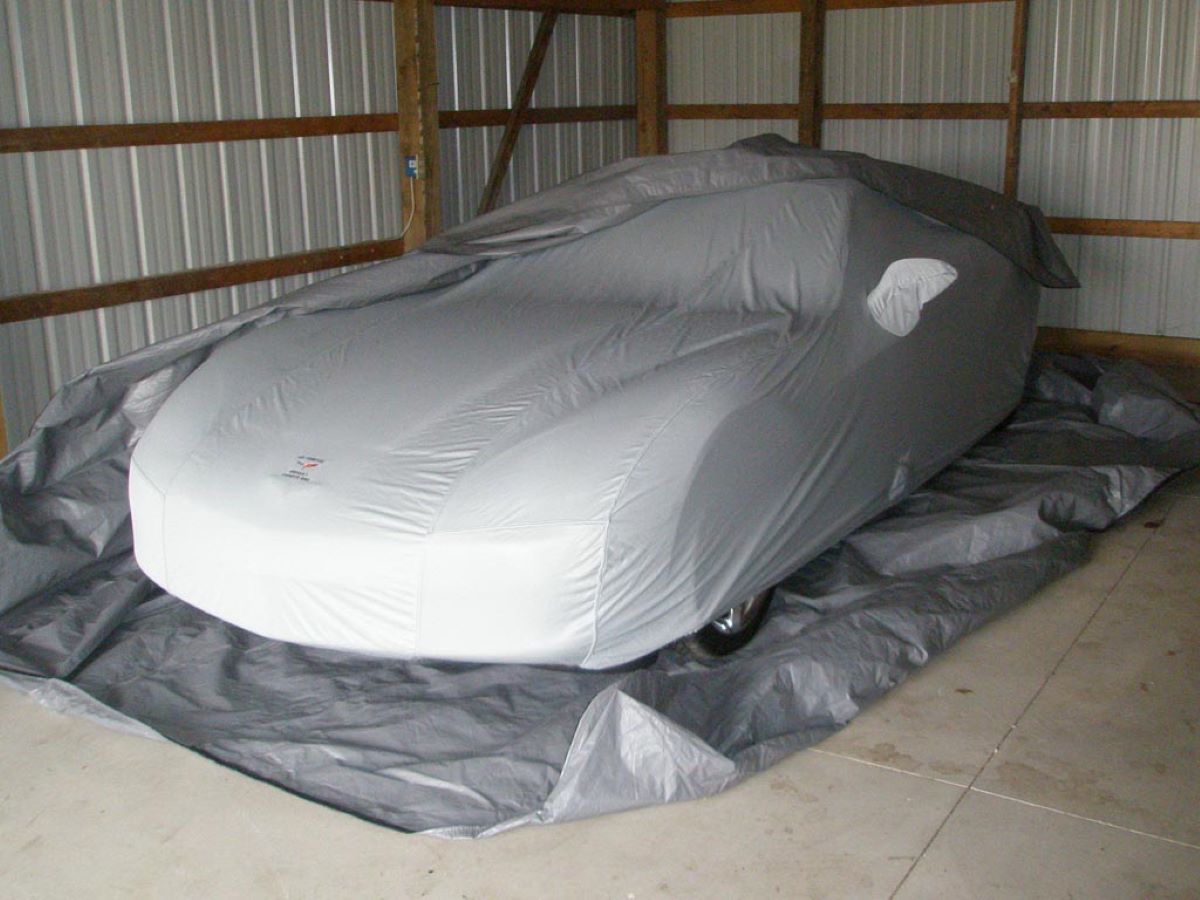
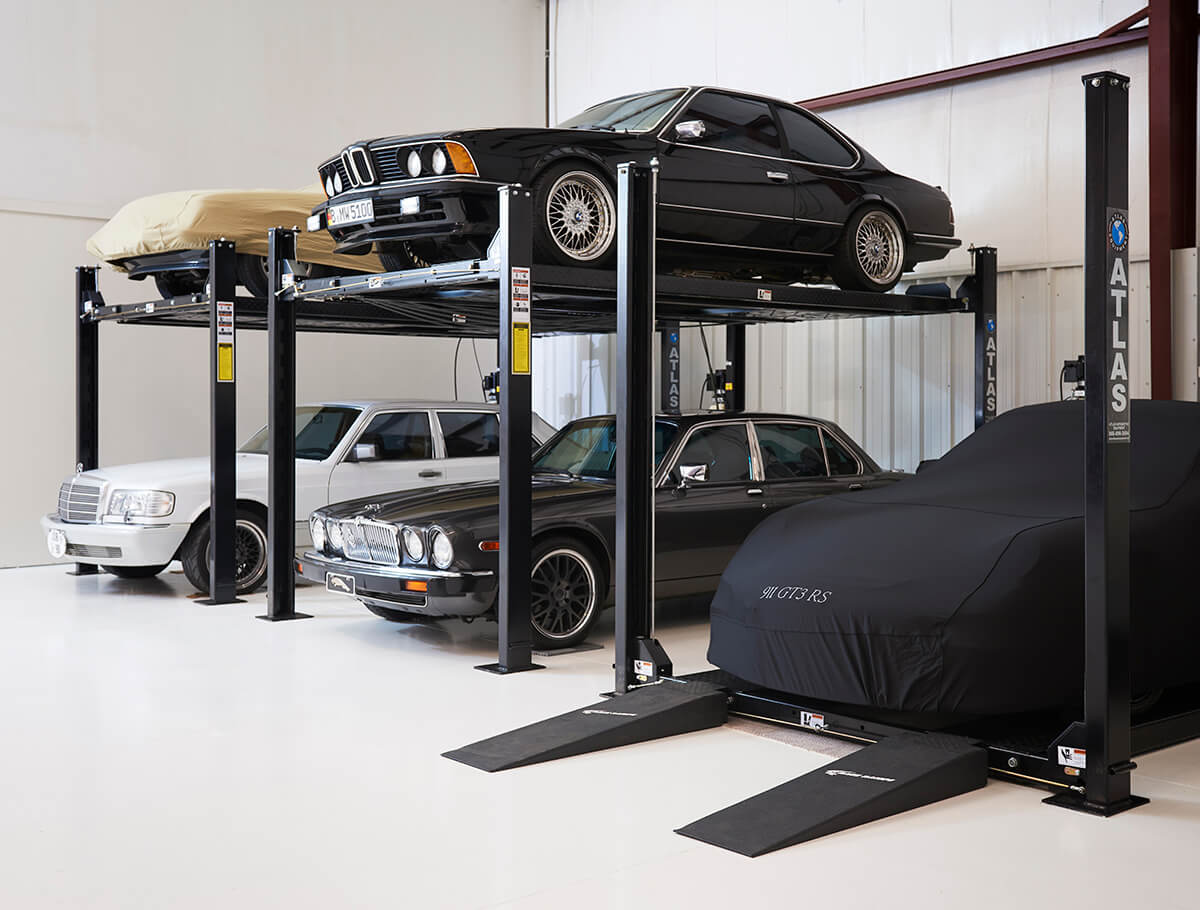
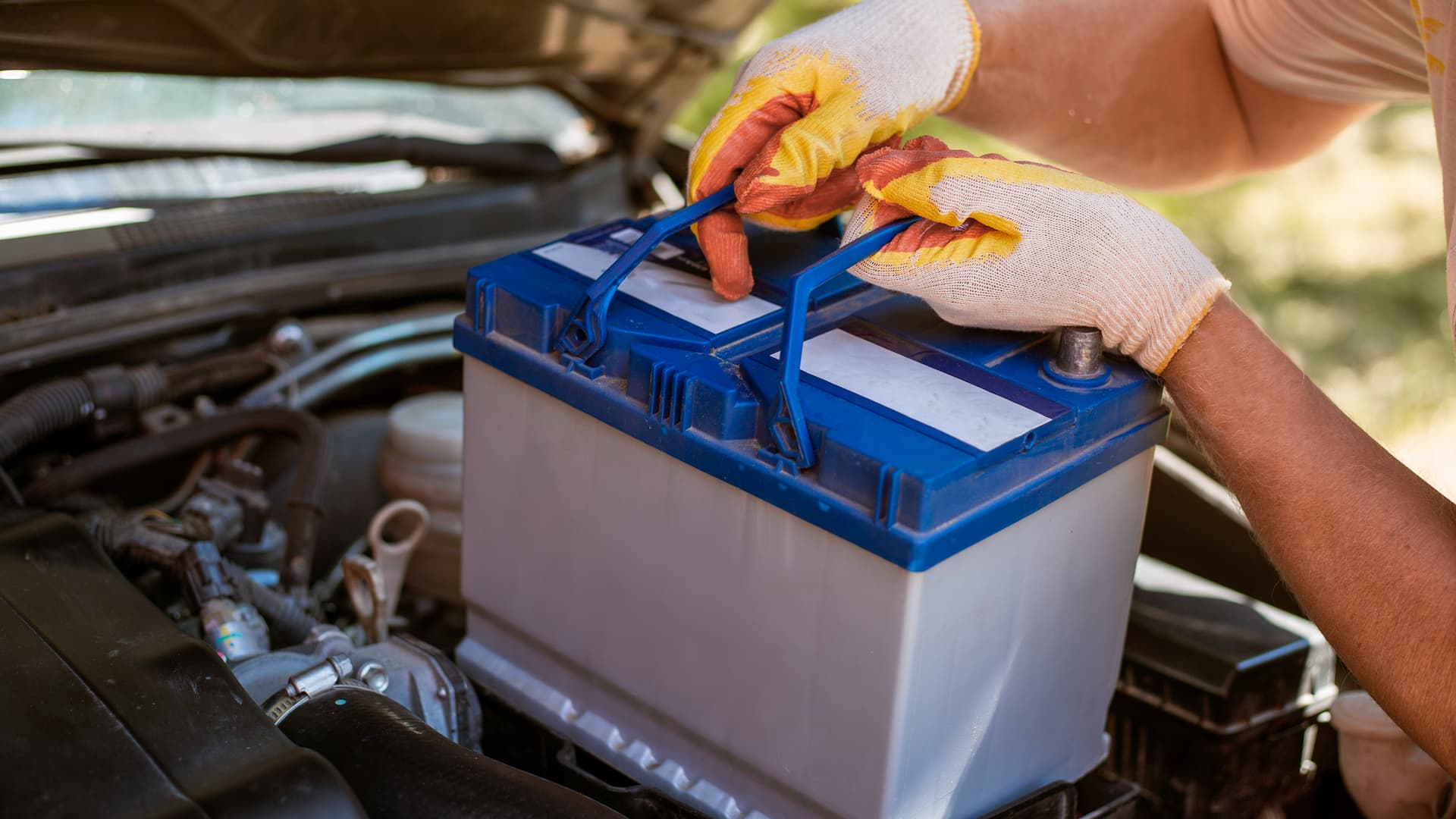


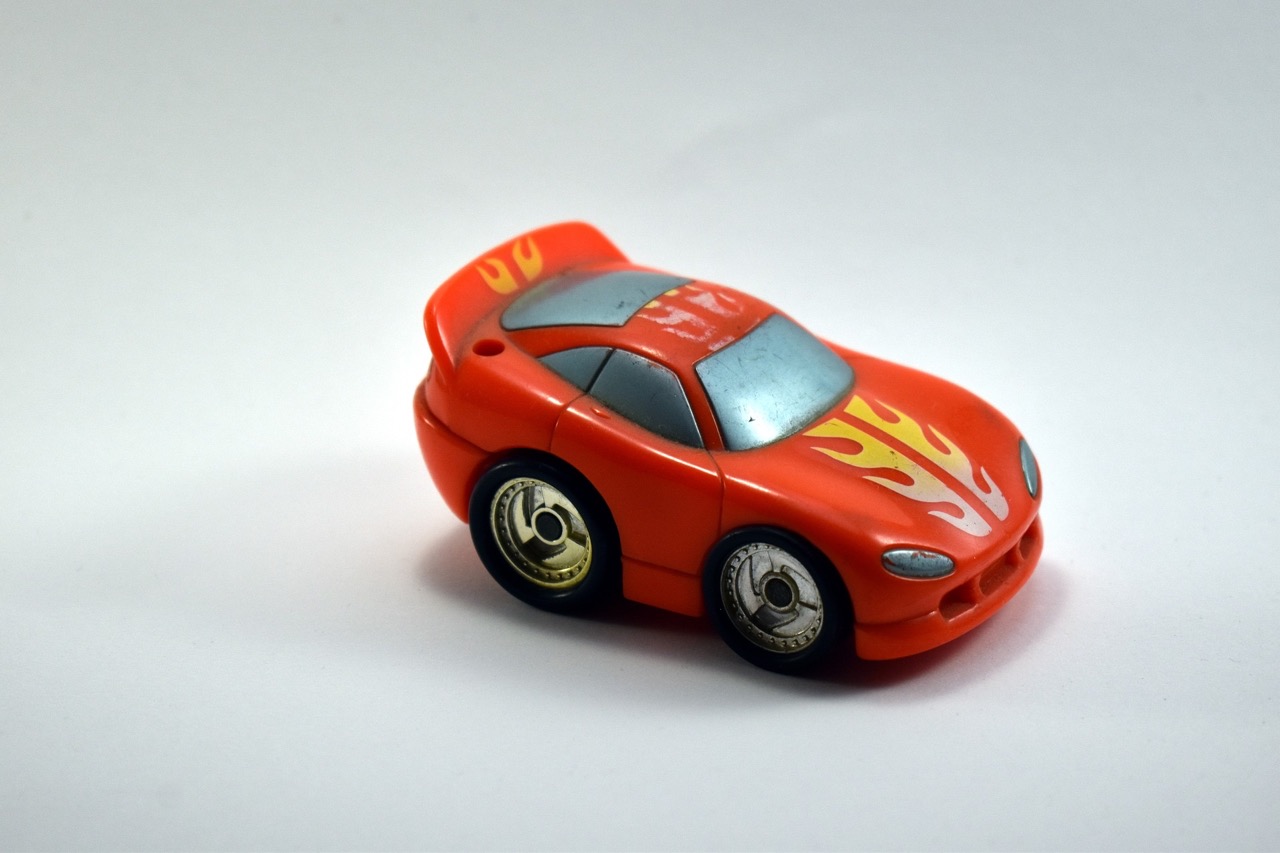


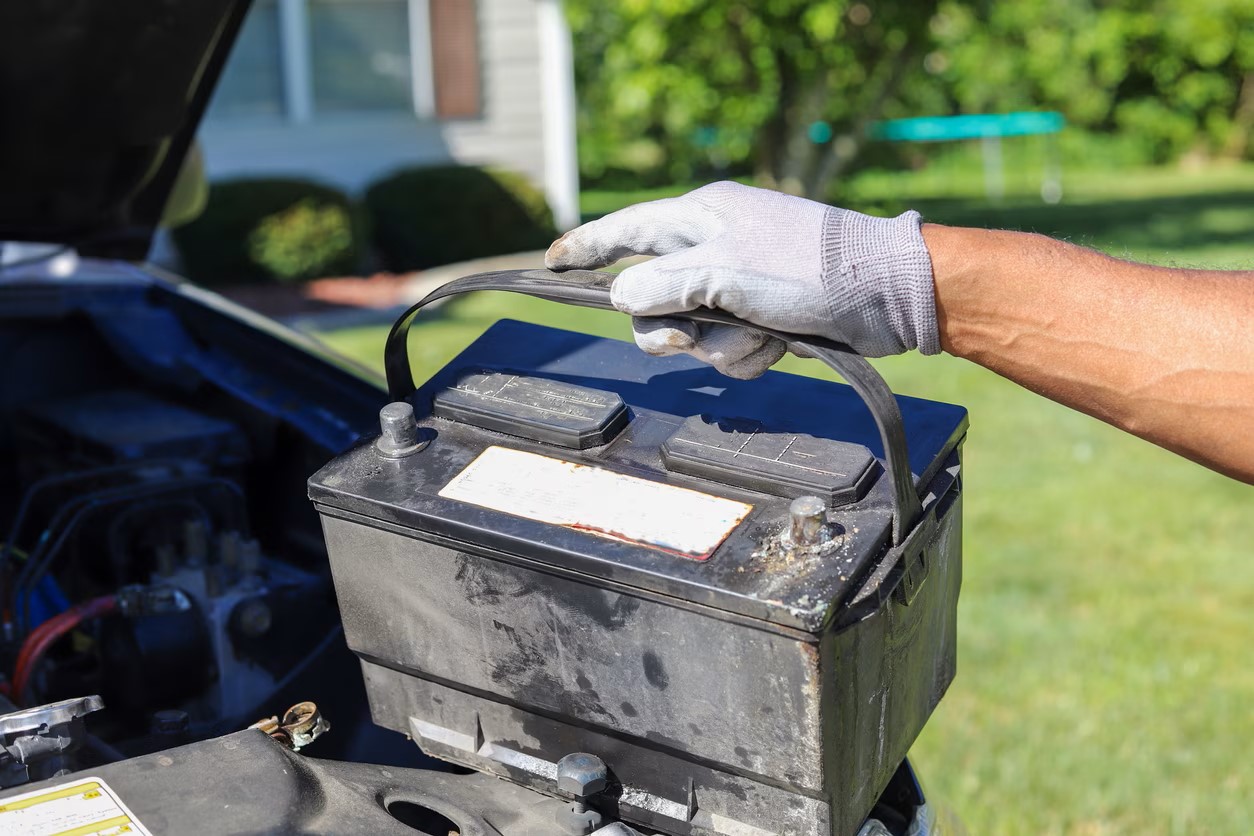
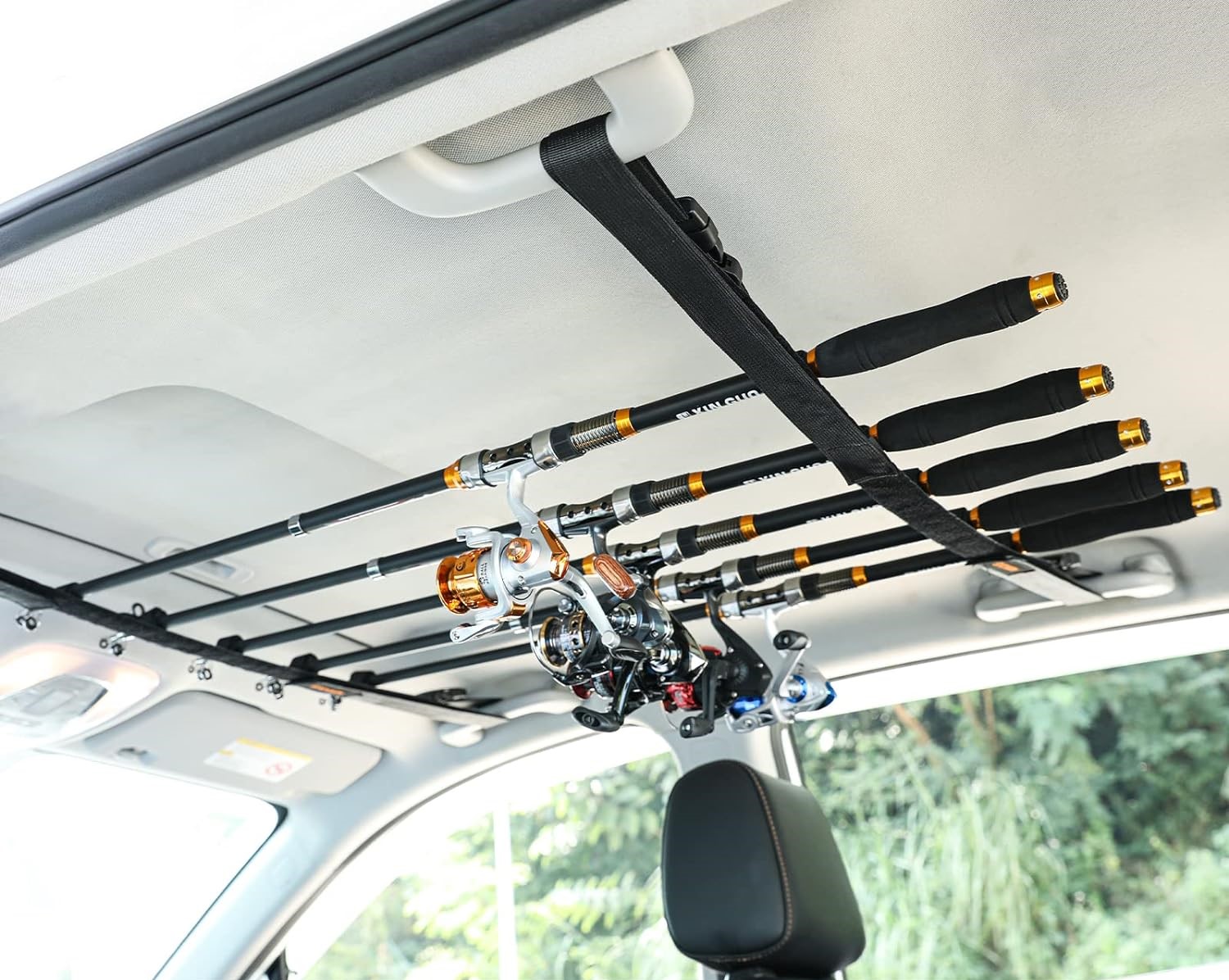

0 thoughts on “How To Store A Car For A Year”